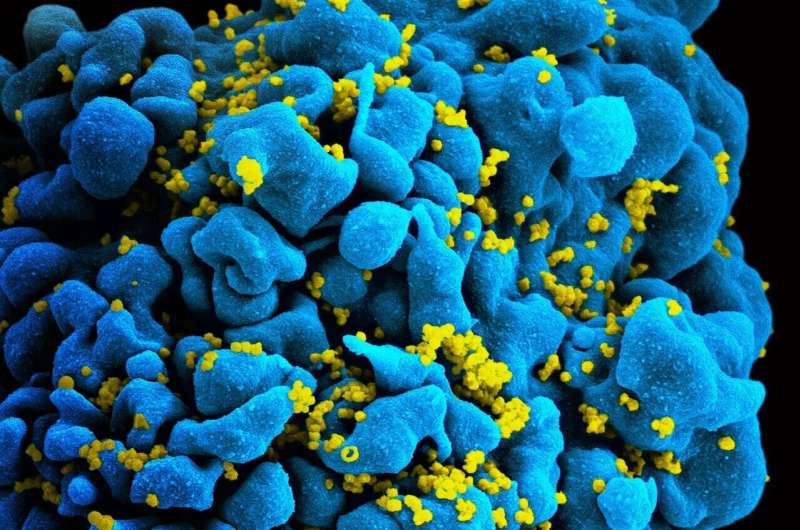Study examines women's attitudes toward long-acting injectable therapy to prevent HIV

Oral pre-exposure prophylaxis (PrEP) is a highly effective method of reducing risk for HIV, yet use of PrEP is uniformly low, especially among women. As a result, researchers have developed long-acting injectable (LAI) versions of PrEP, one version of which was recently shown to be superior to oral PrEP in Phase 3 trials. A new study among women at high risk for HIV explored their hesitancy to use PrEP overall, as well as their interest in and willingness to use LAI PrEP. While one-third of the women interviewed would not consider PrEP regardless of its formulation, when asked to choose, the majority (55%) would prefer LAI PrEP over oral PrEP.
Researchers at Columbia University Mailman School of Public Health led the research, as part of Women's Interagency HIV Study (WIHS), the largest national prospective cohort study of women living with HIV and at risk for HIV infection in the U.S. Their analysis of in-depth interviews with 30 HIV-negative women, nearly all who are women of color, appears in the journal AIDS and Behavior.
Despite PrEP's increasing availability and inclusion in many state Medicaid formularies, just over half of the women interviewed had heard of PrEP. These women, whose median age was 51, shared a near uniform view that LAI PrEP was a useful option for others, but that it was not relevant for their lives. This was due to low levels of perceived HIV risk, primarily due to being in monogamous partnerships. However, previous research suggests a potential disconnect between perceived HIV risk and actual HIV risk; the only group of women for whom HIV incidence is not decreasing is 55 and over. An earlier study of HIV-negative women in WIHS found that 7 percent had a partner living with HIV, 38 percent had a new partner in the past six months, 19 percent reported consistent condom use, and 18 percent reported using cocaine or heroin—all risk factors for HIV.
Women pointed a number of barriers to using LAI PrEP, including their fear of new—and perceived untested—injectable products, injection location (buttocks) and related side effects (soreness); the need for more frequent doctors' visits (LAI PrEP injections require clinic visits every two months vs. every three to six months for pills); and medical mistrust. The researchers note that medical mistrust might also be particularly salient for women of color given the U.S.' history of forced sterilization campaigns that often used injections.
Reported benefits of LAI PrEP included beliefs that shots were more effective than pills, and convenience and confidentiality related to injections. The researchers speculate that LAI PrEP may provide a safeguard for women whose partners refuse condoms or for those who believe their partners may be unfaithful, while providing confidentiality in ways that minimize the fear of retaliation—providing women with more autonomy over their bodies and control of their health.
Women living with HIV comprise nearly one-quarter of all persons living with HIV in the U.S. Although HIV incidence has declined among women overall since 2010, HIV incidence has not decreased among women 55 and older. In addition, racial and ethnic disparities remain stark: in 2017, Black women constituted 59 percent of new HIV diagnoses among women despite being just 13 percent of the female population. Other research has shown that older adult women do not see themselves at risk for HIV, and often lack knowledge about HIV risk. However, HIV prevention programs rarely target women over 50 and healthcare providers rarely communicate with this demographic about sexual risk.
"Women of color in the U.S. are at disproportionate risk of HIV acquisition, and we must explore how prevention measures can be scaled up and deployed in ways that can be easily incorporated in their daily lives," said first author Morgan M. Philbin, Ph.D., assistant professor of sociomedical sciences at Columbia Mailman School. "Continued efforts must be made to provide information about PrEP in an appropriate and non-stigmatizing way to all women, and also to address all types of barriers that challenge women's ability to access and to use PrEP."
More information: Morgan M. Philbin et al, Interest in Long-Acting Injectable Pre-exposure Prophylaxis (LAI PrEP) Among Women in the Women's Interagency HIV Study (WIHS): A Qualitative Study Across Six Cities in the United States, AIDS and Behavior (2020). DOI: 10.1007/s10461-020-03023-9





















